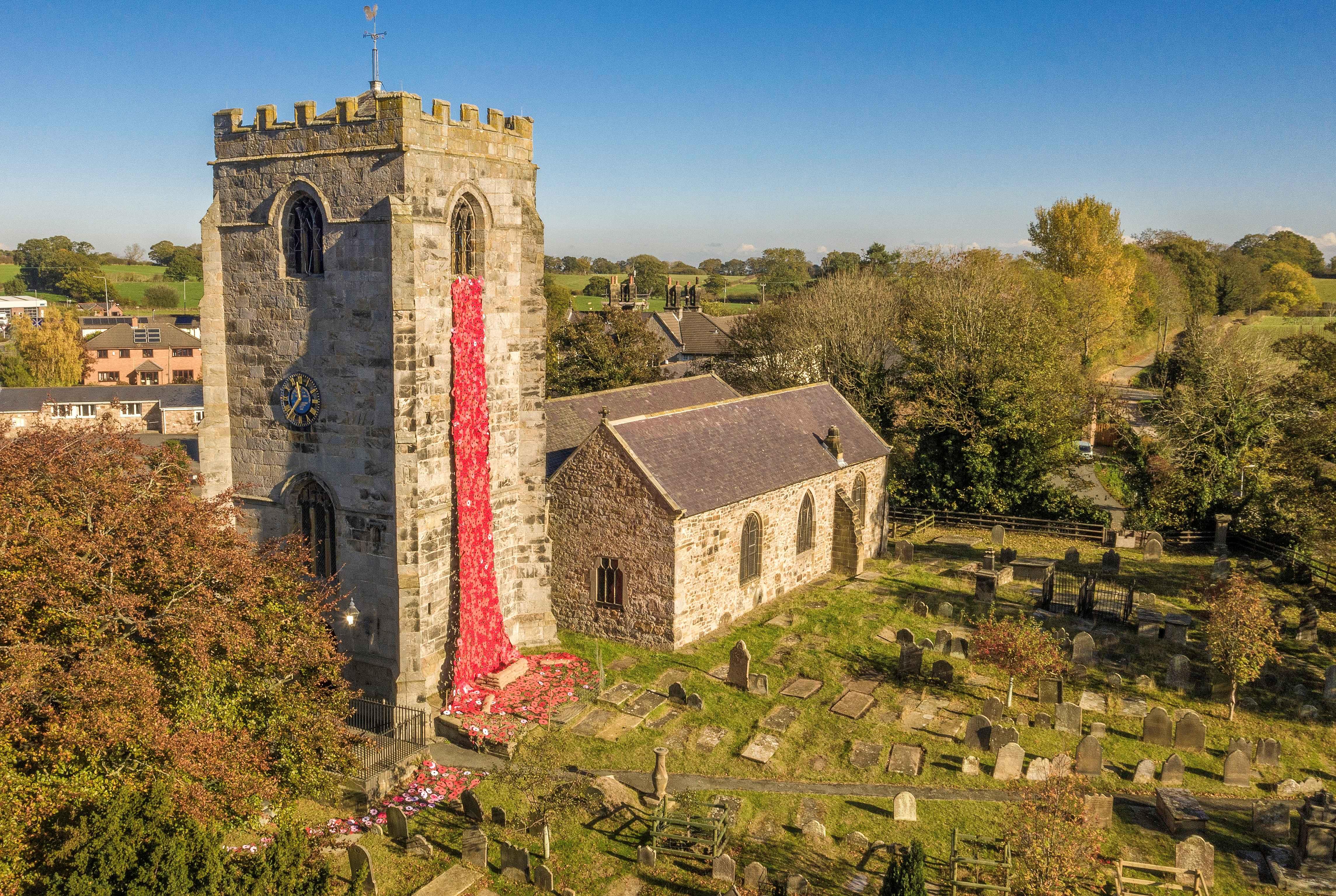Holy Trinity
Gwersyllt, Wrexham
Holy Trinity is a Victorian building set in a large churchyard, located on the edge of Wrexham town.

The church at Hope has its origins in the 12th century; it has many well documented historical features which provide interest but manage not to dominate the church or destroy the peaceful atmosphere which so many visitors comment on.
Hope, Flintshire
As you enter the churchyard from the car park you may well, depending on the time of year, find sheep grazing. The earliest churches on this site would have been of wooden construction, followed in the last quarter of the 12th century with a small stone church which now comprises the area in the south aisle around the font. The church was gradually extended during the 13th and 14th centuries, culminating in around 1500 with the addition of the tower.
Entering the church through the west door, under the tower and up the steps, the church looks light and peaceful, but things were not always so: the large east window straight ahead of you, known as the Te Deum Window, comprises fragments put back together after the glass was hidden during more turbulent times. The peaceful side chapel was reconstructed during the Millennium Restoration in 2000 after dry rot threatened the structure of the church. Do feel free to pick up our printed guides, the A4 laminated guides which pick out particular items of interest, and a leaflet you can take with you providing a concise history of the church.
In the main aisle, above the Jacobean pulpit, is a newly dedicated window inscribed with words from Psalm 121 and showing bells in our tower and the sheep in the churchyard. Above the arches to the right of the main aisle you will see remnants of wall paintings dating from 1630 which underwent conservation in 2019 and have allowed us to identify the painted scriptural texts. In the side chapel are the Tudor inscription and memorial to Sir John Trevor, secretary to the Admiral of the Fleet at the time of the Spanish Armada in 1588. Turning your back on Sir John and his wife you will see, behind the modern altar and to the left of the window, the head of a 1000 year old Celtic Cross which has been inlaid in the wall to keep it safe, and to remind us that this has been a sacred site for many generations.
Gwersyllt, Wrexham
Holy Trinity is a Victorian building set in a large churchyard, located on the edge of Wrexham town.
Gresford, Wrexham
Very fine misericords and carvings, a wealth of medieval glass, a memorial to 266 miners and a peal of bells which is one of the Seven Wonders of Wales.
Penymynydd, Flintshire
This elegant Early English style church was built in 1843 of local stone paid for by Sir Stephen Glynne.